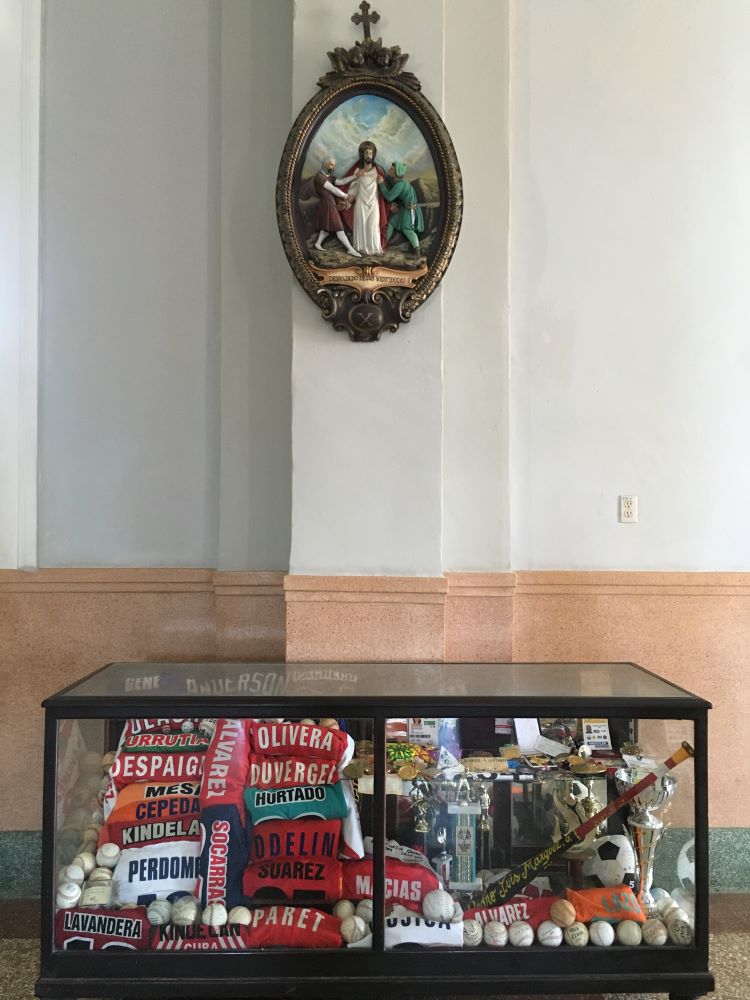Over the centuries since 1612, the image of the Virgin of Charity also became a principal symbol of cubanidad and a source of miraculous healing for tens of thousands of believers. Her shrine holds hundreds of thousands of objects, called milagritos, that these believers have brought and left at the shrine. Monthly, the nuns who attend it, care for and store old milagritos with reverence while allowing pilgrims to put new ones on display. The main sanctuary of the Church features a glass case with dozens of Major and Minor League uniforms, bats, and balls that Cuban players have brought back to the Virgin as a testament to the miracle that they asked for—to leave Cuba and fulfill their athletic potential.


Nearby, the Hall of Miracles features dozens of crutches and other medical equipment that once disabled believers brought to show how God, through prayers to Mary, had cured them. Older generations’ little silver pins, shaped in the form of an arm, a heart, a leg, even a brain, a liver, a gall bladder, and the like, tell stories of diseases cured and bodies restored. They are called milagritos [little miracles], symbols of the divine advocacy in individual lives that the Virgin performed over the last two centuries. Most striking of all, perhaps, tables tell the stories of contemporary Cubans today. People who finished a university degree or thesis bring their diplomas or a copy of the thesis itself as an offering of thanks. Military officers abandon their uniforms, stars, and awards of distinction as a sign of their regret, their repentance, or, in some cases, their ironic sense that God was responsible for their success in a Communist state. Houses, built with paper and glue, tell the story of Cubans who lost their homes to hurricanes, floods, and fire, only to rebuild and survive with the Virgin Mary’s help. All are displayed as miracles—divine acts of merciful love—and personal testimonies of profound faith.



